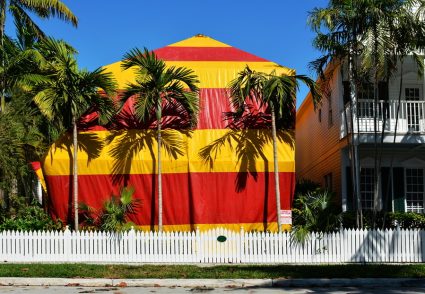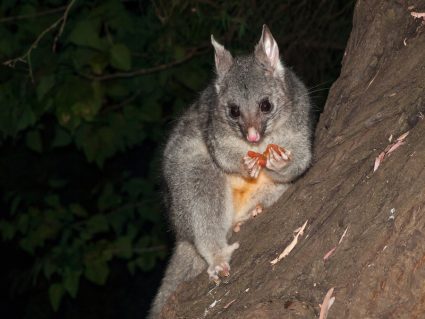
Keeping a lush, green lawn can be a source of pride for homeowners. However, maintaining a healthy lawn requires knowledge, effort, and vigilance. One of the most common challenges faced by homeowners is dealing with grubs – the larvae of beetles that are notorious for damaging the roots of grass. In this comprehensive guide, we’ll explore how to identify, prevent, and control grub infestations, ensuring your lawn remains the envy of your neighborhood.
To keep grubs out of your lawn, identify signs of infestation such as dead patches, spongy turf, or increased wildlife activity. Prevent infestations by watering properly, aerating your lawn, using natural repellents, planting resistant grasses, and applying beneficial nematodes. If you already have an infestation, use grub control products, beneficial nematodes or milky spore, and aerate and overseed your lawn. Long-term maintenance includes monitoring your lawn, maintaining proper watering practices, and applying preventive treatments during the appropriate season.
Identifying Grubs and Understanding Their Life Cycle
Grubs are the larvae of various types of beetles, including chafer grubs, leatherjackets, Japanese beetle grubs, May or June beetle grubs, masked chafer beetle grubs, and Oriental beetle grubs. These grubs feed on the roots of plants, particularly grass, causing significant damage to lawns if their populations become too high.
Grubs are usually C-shaped, have a creamy white body with a brown head, and six spindly legs. Their size can vary depending on the species and their stage in the life cycle.
Signs of a Grub Infestation
Grub infestations can significantly affect the health and appearance of your lawn. Here are a few signs to look out for:
- Dead or thinning patches: Grubs feed on grass roots, causing patches of grass to wilt or die. These patches often start small but can quickly spread.
- Spongy turf: Grub-infested lawns may feel spongy underfoot due to the extensive damage to the grass roots.
- Increased bird or wildlife activity: Birds, skunks, raccoons, and other animals feed on grubs and might be seen digging in your lawn.
- Beetle sightings: If you notice a high number of beetles flying around grass level, it could be a sign of a potential grub infestation.
To confirm a grub infestation, you can cut a square foot of turf about three inches deep. If you find more than five grubs, it’s likely you have an infestation that needs to be addressed.
How to Prevent Grub Infestations
Prevention is always better than cure. Here are some tips to prevent grub infestations:
- Water Properly: Overwatering during the summer can provide the moisture needed for grub eggs to thrive. Water deeply but infrequently to encourage deep-rooted grasses.
- Aerate Your Lawn: Regular aeration can make your lawn less hospitable for grubs by breaking up compacted soil, improving the health of your grass.
- Use Natural Repellents: Neem oil, for example, can deter beetles from laying eggs.
- Plant Resistant Grasses: Deep-rooted grasses like ryegrass and fescue are more resistant to grub damage.
- Apply Beneficial Nematodes: These microscopic worms can help control grubs and other soil-dwelling pests without harming beneficial insects.
How to Control Grub Infestations
If you already have a grub infestation, here are some effective control measures:
- Apply Grub Control Products: Products containing imidacloprid, thiamethoxam, or clothianidin can be applied in the spring or early summer before a grub problem develops.
- Use Beneficial Nematodes or Milky Spore: These natural control methods can effectively reduce grub populations.
- Aerate and Overseed: This can help your lawn recover from grub damage by encouraging the growth of new, healthy grass.
Long-Term Maintenance for a Grub-Free Lawn
Maintaining a grub-free lawn over the long term requires vigilance and regular lawn care. Monitor your lawn for signs of grub damage, maintain proper watering practices, and apply preventive treatments during the appropriate season.
Remember, a few grubs in your lawn are normal and not necessarily a cause for concern. However, if you notice a significant increase in grub populations or damage to your lawn, it’s essential to take action to control them. By following these tips, you can maintain a healthy, lush lawn that’s free of grubs.
Frequently Asked Questions
What time of year do grubs typically appear?
Grubs typically appear in the late summer and early fall. However, the exact timing can vary based on your geographic location and the specific type of beetle.
How long does it take to get rid of grubs?
The time it takes to get rid of grubs can vary based on the severity of the infestation and the control method used. Chemical treatments can take a few weeks to a month to work, while natural control methods like beneficial nematodes or milky spore can take a bit longer.
Can grubs kill my lawn?
Yes, a severe grub infestation can kill your lawn. Grubs feed on the roots of grass, which can cause the grass to wilt and die. If left untreated, a grub infestation can cause significant damage to your lawn.
How do I know if the grubs are gone?
A reduction in the signs of grub damage, such as fewer dead or thinning patches of grass and less wildlife activity, can indicate that the grubs are gone. You can also check by digging up a small section of your lawn. If you find fewer than five grubs in a square foot of turf, it’s likely that the infestation is under control.
Are there any natural predators of grubs?
Yes, there are several natural predators of grubs, including birds, skunks, raccoons, and beneficial insects like ground beetles and parasitic wasps. These predators can help control grub populations. However, they may not be able to effectively manage a severe infestation.










